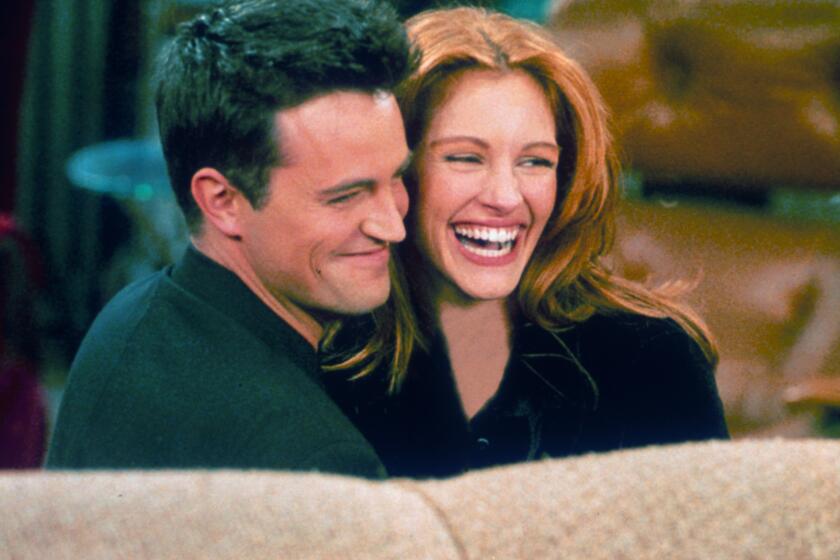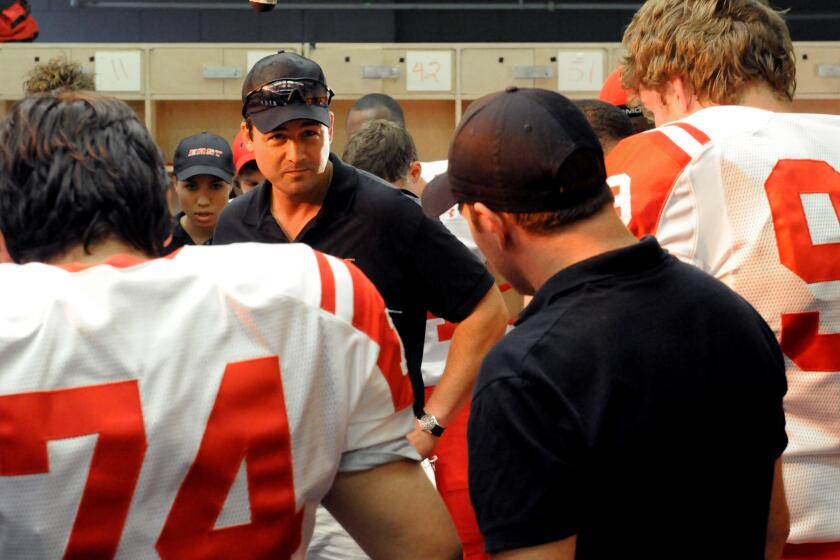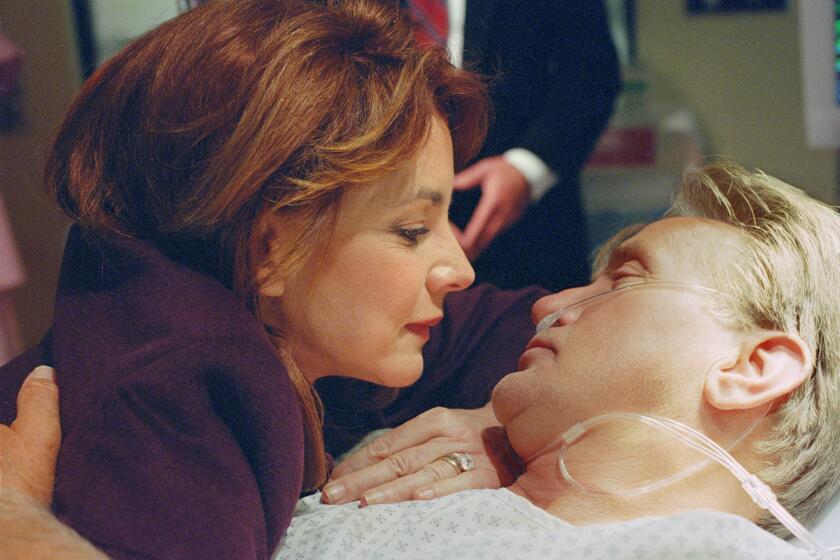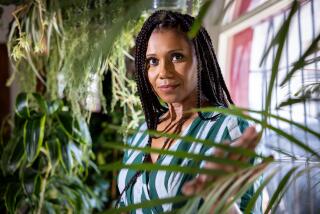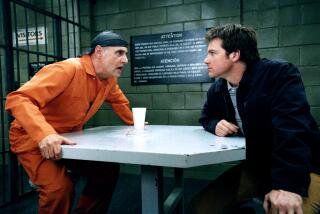What made the original ‘Frasier’ pilot a ‘slam-dunk’?
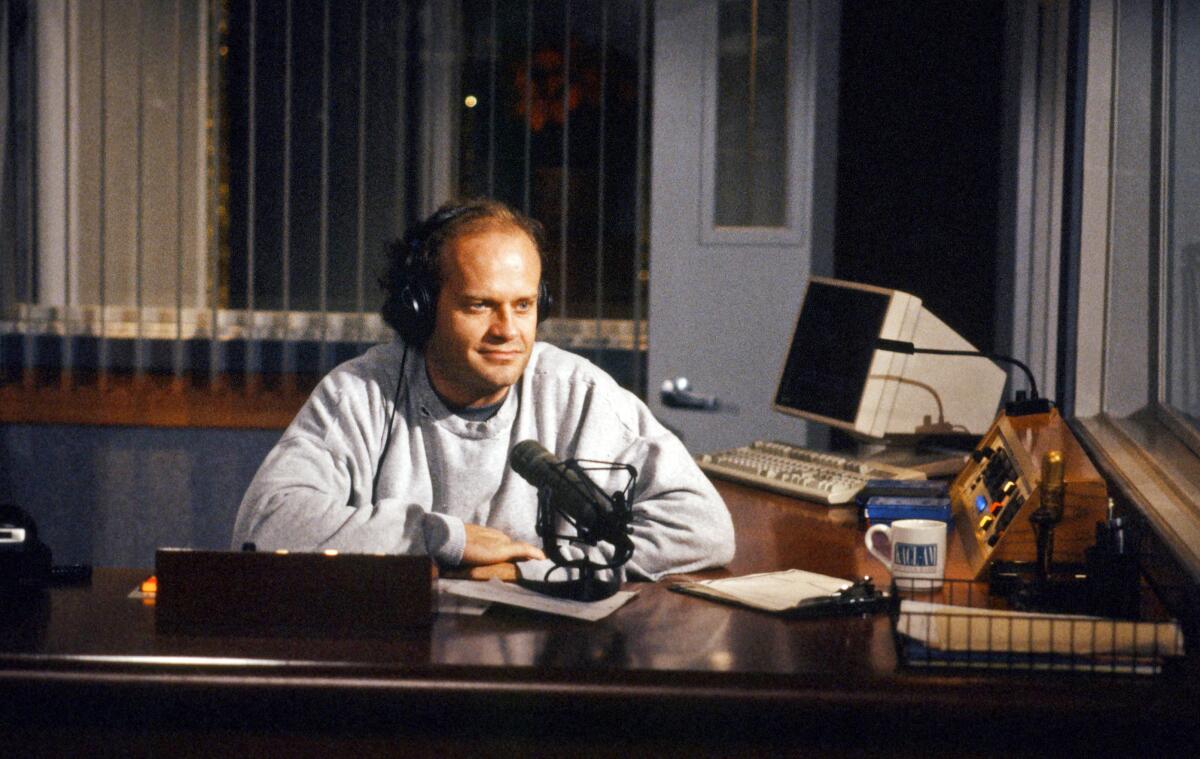
- Share via
In “Inside the Episode,” writers and directors reflect on the making of their Emmy-winning episodes.
Comedy director James Burrows has created a catalog of memorable TV moments through his work on such sitcoms as “Cheers,” “Taxi” and “Friends.”
In 1993, he was tasked with making magic happen on the pilot of the “Cheers” spinoff “Frasier,” which follows Kelsey Grammer’s velvet-voiced psychiatrist to Seattle. There, the character would find a new career path as a radio host, while also exploring his own Freudian issues with his brother, Niles (David Hyde Pierce), and his dad/roommate, Martin (John Mahoney).
Michael Lembeck talks about directing the Emmy-winning ‘Friends’ episode with guest stars Julia Roberts and Brooke Shields, and how Jean-Claude Van Damme and Andre Agassi’s bad behavior complicated the set.
Turns out, the show’s theme-song meal of tossed salad and scrambled eggs made for a pretty tasty combination. The first iteration of “Frasier” ran for 11 seasons and made Primetime Emmy history with 37 total wins. One of those honors went to Burrows’ work on the pilot. The second season of a revival, which follows the good doctor’s return to Boston to live with his adult son (Jack Cutmore-Scott), will premiere Sept. 19 on Paramount+. Burrows also has directed episodes of that version.
Talking to The Times over the summer, Burrows’ memory is slightly hazy on some of the specifics of making the first “Frasier.” (“I can give you the whole derivation of ‘Cheers,’ but ‘Frasier’ was done while I was working” on the original show’s final season, he says.) But there are some things he has not forgotten.
You directed most of the episodes of “Cheers.” But were you apprehensive about taking over the pilot of “Frasier”?
Not at all.
Is there something you like about that character?
No, the actor.
Joe Cristalli and Chris Harris wanted the reboot of the iconic series to focus on a new chapter for its lead character, Frasier Crane, by focusing on his relationship with his son, Freddy.
What do you like about him?
What’s not to like? I’ve worked with him now for 40 years. He started in ’84 as a character on “Cheers” as a device to get [Shelley Long’s] Diane back into the bar. It was a four-show arc. Then, once he started speaking, [fellow creators] Glen and Les [Charles] and myself said, “No, we’ve got to keep this guy on the show.”
Going to the “Frasier” pilot, it was a slam-dunk. Plus, it was a brilliant script written by [David] Angell, [Peter] Casey and [David] Lee — three people who had worked on “Cheers.”
How involved were you in the casting of the other “Frasier” characters?
That was mostly the writers because I was busy finishing “Cheers.”
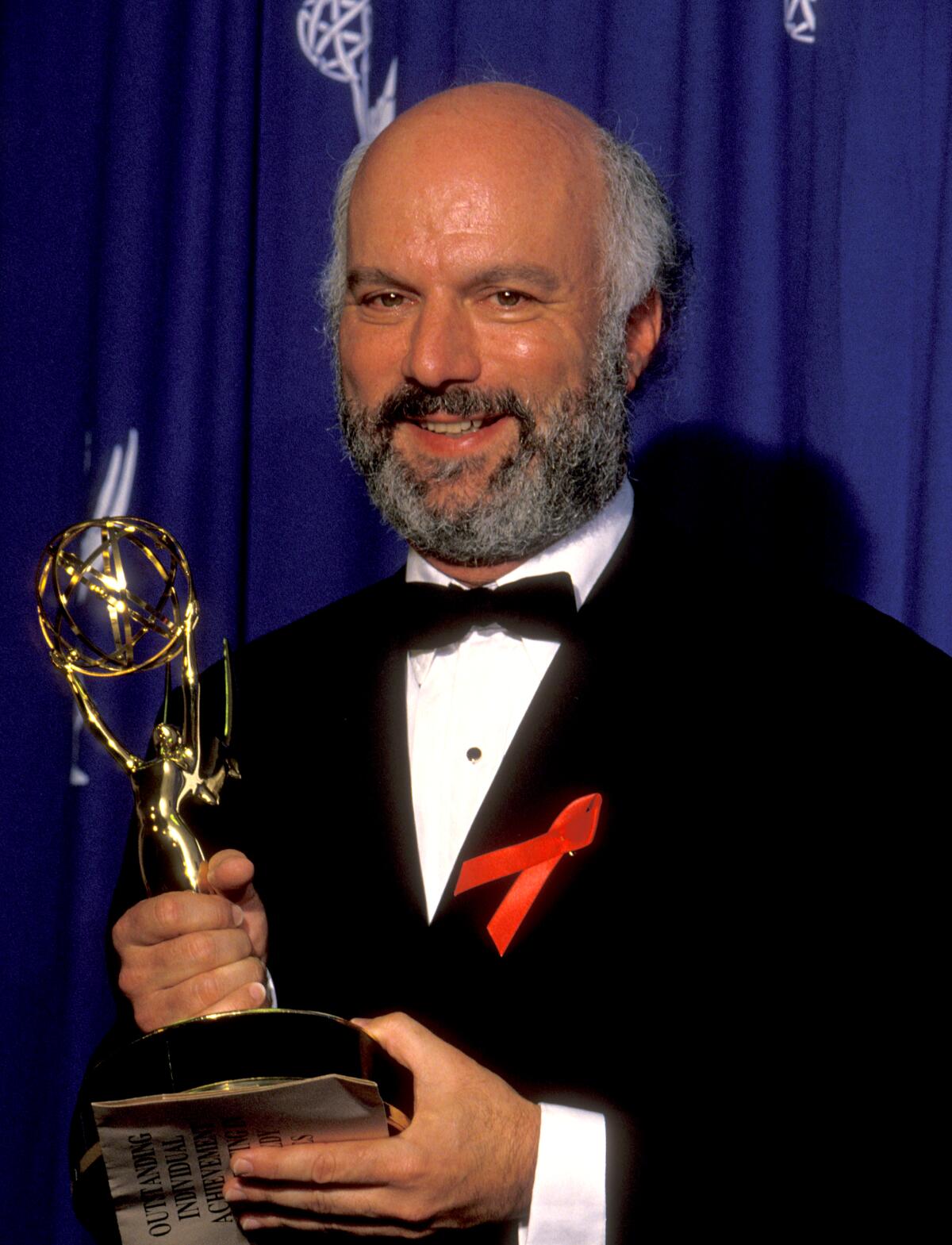
How much experience did the other actors have with multicamera comedies before this? Was it hard to teach them how to use the medium?
David Hyde Pierce was a Broadway actor. John Mahoney was a Chicago actor. I don’t know where Jane Leeves [who played Martin’s caretaker, Daphne] was from. Peri [Gilpin, who played Frasier’s radio producer Roz] had been on “Cheers,” so I knew she could do it. So that was not difficult at all.
Peri Gilpin was a recast. She replaced Lisa Kudrow, whom you’d eventually work with on “Friends.” Were you involved in the recast?
Yes. And I think it worked out pretty good, didn’t it? That’s all you have to say.
I think it was the nature of the first show, where Roz has to talk Frasier into going and confronting his dad. And she has to be forceful. And at that point, that was not Lisa’s major suit.
‘Friday Night Lights’ creator Jason Katims reflects on the show’s Emmy-winning series finale.
How many days did you have to film this pilot?
One day. It’s live in front of a studio audience. You bring the audience in and you throw s— at the wall and see what sticks.
Was there anything that didn’t stick?
No. As with every pilot I do, I have a test audience. This means I bring an audience in four days before I shoot it, [and] I have one single camera to cover the scenes that are not in front of the audience, that are somewhere on the stage where the audience can’t see. And that run-through was an extraordinary show. Everybody laughed, even looking at this wide master shot. You had an entree. You had this character, Frasier, who was leading you into a new show, so it was hard to screw it up and nobody did.
How hard is it to introduce a whole bunch of new characters and make sure that the audience is able to keep up with who everyone is?
Well, it’s difficult. But if you have great writers, they can do it. We did it on “Cheers.” We have people you’ve never seen before. And then [on] the pilot, you knew who everybody was. Same with “Frasier,” except with “Frasier,” you had a guy who could bring you into the world of these new people. They were all introduced exquisitely, and you knew exactly at the end of the show who those people were.
Just as with real-life assassination attempts, to really understand the power of ‘The West Wing’s’ two-part Season 2 premiere, ‘In the Shadow of Two Gunmen,’ requires a look back at the actions before the attack.
When did you first realize that Moose, the dog who played Martin’s companion and Frasier’s foil, Eddie, was a comic genius?
Oh, he came up and told me. (Laughs.)
You have to have a good dog trainer. [Mathilde de Cagny] was great with the dog, and the dog did whatever she said. And we could do most of the stuff in front of an audience, as opposed to preshooting all the dog stuff.
[Editor’s note: Roger Schumacher was the trainer on the pilot; Mathilde de Cagny took over for the rest of the show.]
Did you have any conversations with the production department about what Frasier’s apartment would look like?
Again, I walked into that. Angell, Casey and Lee had made those choices. They wanted it to be upscale. They wanted it to be in Seattle. They wanted it to be tall. The only thing I contributed was Mahoney’s chair. I was the one who put a piece of duct tape on that chair. That’s my responsibility.
What made you decide to add duct tape?
Because it was a comparison between him and Frasier; Frasier would never have done that, but Mahoney would do that in defiance.
You’re also involved with the new iteration of “Frasier” that premiered last year on Paramount+. Are you surprised at how well this show lives on in pop culture? Was there any sense when you were doing it then that you were making something so magical?
I don’t think in the early years you think about that. You just know you’re doing a good show. And so, obviously, the choices you make as a director and as a writer are the right choices that will carry it through to the 11 years that it ran. I was not aware that stuff like the tape on the chair was going to live forever. I never thought about that.
